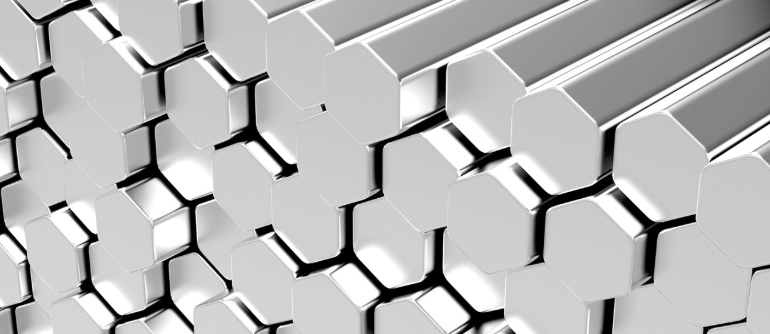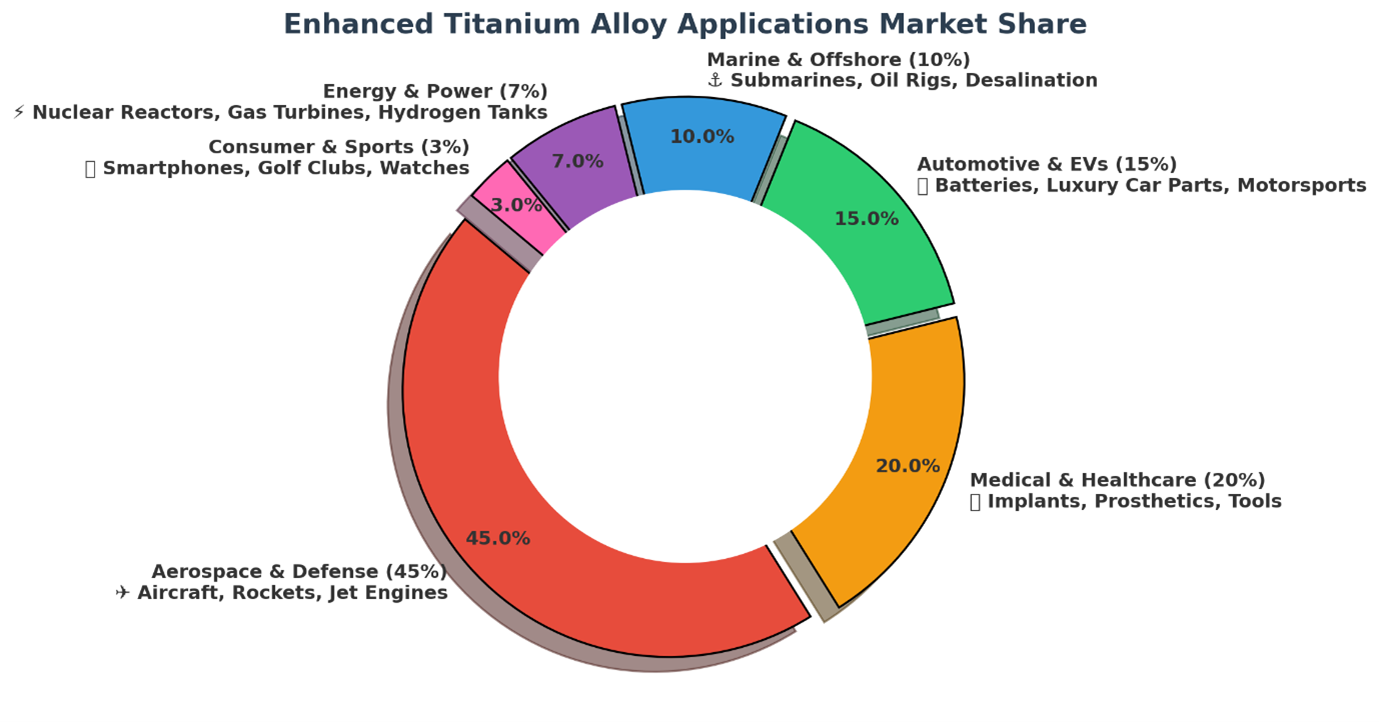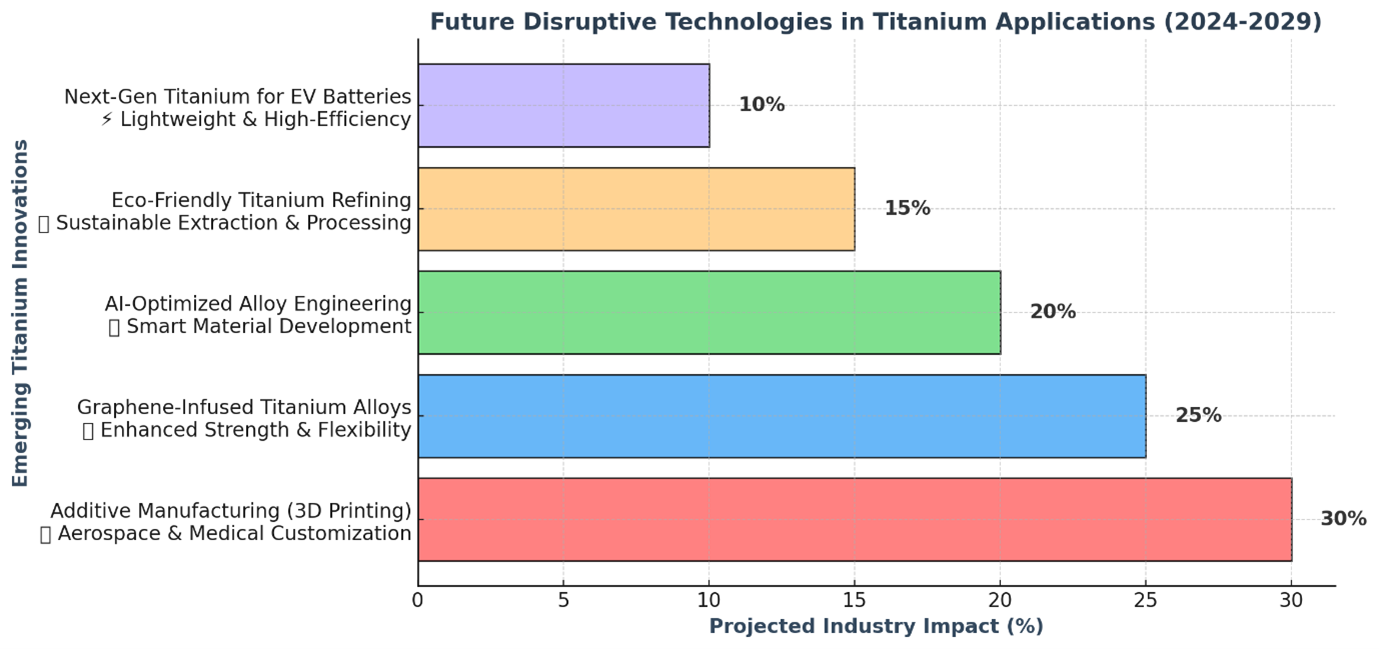- No.3, 327 S.V.P.Road, Makharai House, Mumbai- 400004, INDIA
- sales@ariesalloys.com
Global Titanium Trends: Strength, Innovation & Demand
- Home
- Titanium Alloy Market Analysis

Titanium Alloy Market Analysis: Global Trends, Growth Forecasts, and Industry Opportunities (2023-2029)
Introduction to the Global Titanium Alloy Market
The titanium alloy market is expanding rapidly due to its high strength-to-weight ratio, corrosion resistance, and biocompatibility. Titanium alloys are essential in industries such as aerospace, medical, automotive, marine, and energy due to their superior mechanical properties.
Market Size & Growth Rate (2023-2029)
The global titanium alloy market was valued at $6.5 billion in 2023 and is projected to reach $10.2 billion by 2029, growing at a CAGR of 7.8%. Key factors driving this growth include:
✅ Increasing demand for lightweight materials in aerospace & defense
✅ Growing use of titanium in medical implants & prosthetics
✅ Expanding applications in the automotive and EV sector
✅ Advancements in titanium-based 3D printing & additive manufacturing

Market Segmentation: Types of Titanium Alloys
1. Alpha Alloys (40% Market Share) – High-Temperature Resistance
🔹 Used in: Jet engines, aircraft frames, and nuclear reactors.
🔹 Examples: Ti-6Al-2Sn-4Zr-2Mo
🔹 Key Features: Oxidation resistance, good weldability
2. Alpha-Beta Alloys (35% Market Share) – Most Commonly Used
🔹 Used in: Aerospace structures, medical implants, and chemical processing.
🔹 Examples: Ti-6Al-4V (Most widely used titanium alloy)
🔹 Key Features: Balanced strength, flexibility, and corrosion resistance
3. Beta Alloys (15% Market Share) – High Strength & Ductility
🔹 Used in: Automotive, sports equipment, and deep-sea applications.
🔹 Examples: Ti-10V-2Fe-3Al
🔹 Key Features: Excellent toughness, heat treatable
4. Near-Beta Alloys (10% Market Share) – High-Performance Engineering
🔹 Examples: Ti-5Al-5Mo-5V-3Cr
🔹 Key Features: High strength-to-weight ratio, enhanced fatigue resistance

Key Industry Applications of Titanium Alloys
1. Aerospace & Defense Industry (45% Market Share) ✈️
- Aircraft Frames & Engine Components – Reducing weight for fuel efficiency.
- Rocket & Missile Components – High strength-to-weight ratio in space programs.
- Jet Engine Turbines & Exhaust Systems – Heat and corrosion resistance.
🌍 Top Regions: USA, Europe, China, Russia
2. Medical & Healthcare Industry (20% Market Share) 🏥
- Titanium Implants & Prosthetics – Biocompatible & long-lasting.
- Orthopedic & Dental Implants – Used in artificial joints, plates, and screws.
- Medical Tools & Devices – Hypoallergenic and durable.
🌍 Top Regions: USA, Germany, Japan, India
3. Automotive & Electric Vehicles (EVs) (15% Market Share) 🚗
- Titanium-Based EV Batteries – Lightweight and heat-resistant.
- Performance & Luxury Car Components – Titanium exhaust systems & engine parts.
- Structural Components in Motorsports – Reducing vehicle weight for speed.
🌍 Top Regions: Germany, USA, Japan, China
4. Marine & Offshore Industry (10% Market Share) 🚢
- Naval Submarines & Deep-Sea Vessels – Extreme corrosion resistance.
- Oil & Gas Rigs – Titanium pipelines for longevity.
- Desalination Plants – Titanium heat exchangers in water treatment.
🌍 Top Regions: Norway, USA, South Korea, Middle East
5. Energy & Power Industry (7% Market Share) ⚡
- Nuclear Reactor Components – Radiation-resistant titanium alloys.
- Gas & Steam Turbines – Heat resistance in energy plants.
- Hydrogen Storage Tanks – Essential for renewable energy transition.
🌍 Top Regions: USA, China, France, Canada
6. Consumer Electronics & Sports Equipment (3% Market Share) 🎧
- Smartphones & Wearable Devices – Lightweight & durable casing.
- Golf Clubs, Bicycles, & Tennis Rackets – High strength and flexibility.
- Luxury Watches & Jewelry – Corrosion-resistant and hypoallergenic.
🌍 Top Regions: USA, Switzerland, South Korea, Japan
Market Challenges & Risks
🚧 High Production Costs – Complex refining process increases costs.
🚧 Limited Raw Material Availability – Dependence on titanium ore mining.
🚧 Processing & Machining Difficulties – Requires specialized manufacturing.
🚧 Recycling & Environmental Impact – New eco-friendly processes needed.

Future Trends & Innovations (2024-2029)
🔹 Titanium-Based 3D Printing (Additive Manufacturing) – Custom aerospace & medical components.
🔹 Titanium Graphene Composites – Stronger, more flexible materials.
🔹 AI-Driven Alloy Optimization – Enhancing material properties for specialized applications.
🔹 Sustainable Titanium Extraction – Eco-friendly refining processes.
🔹 Ultra-Light Titanium for EV Batteries – Boosting energy efficiency.
